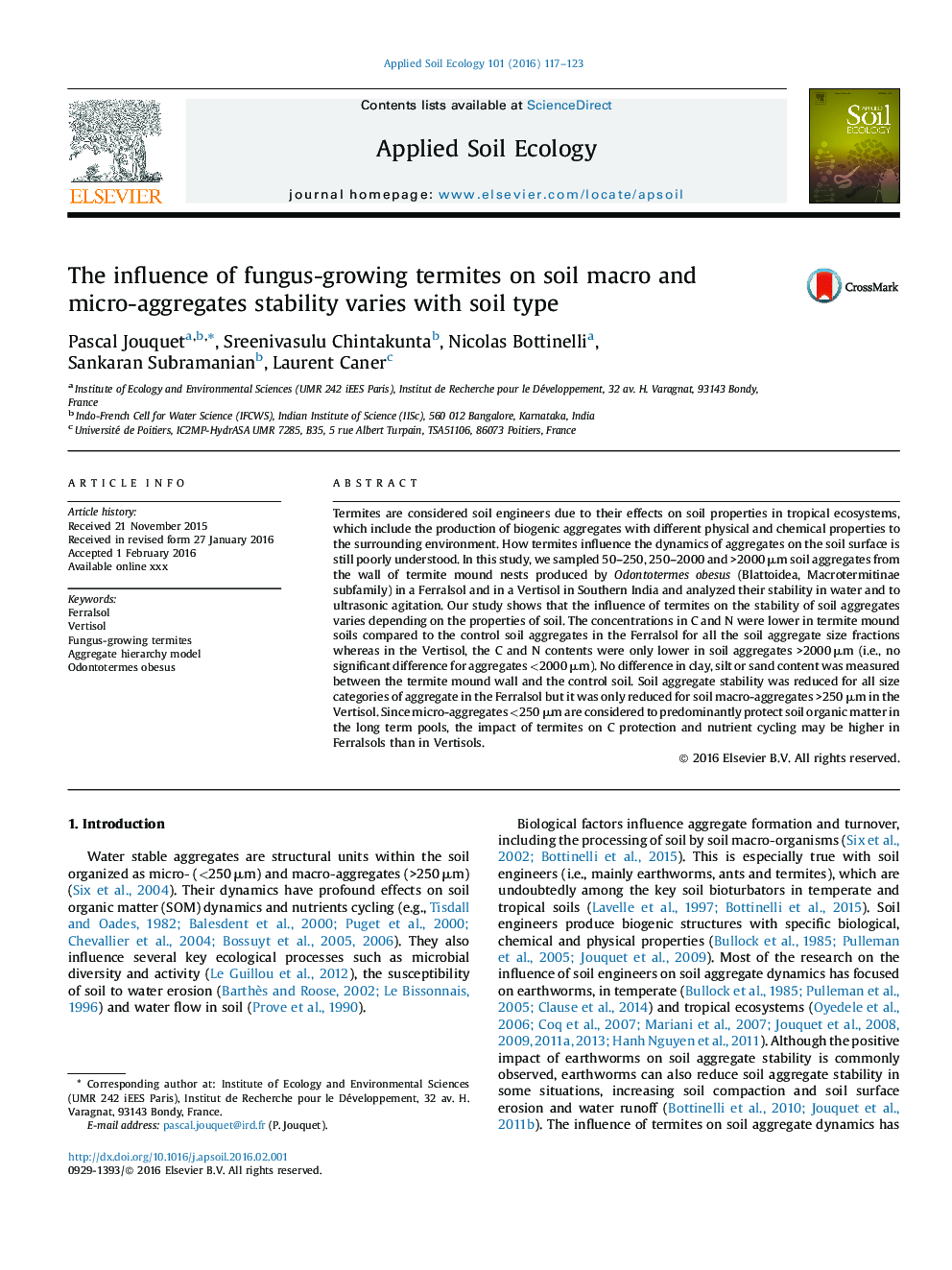| Article ID | Journal | Published Year | Pages | File Type |
|---|---|---|---|---|
| 6297699 | Applied Soil Ecology | 2016 | 7 Pages |
Abstract
Termites are considered soil engineers due to their effects on soil properties in tropical ecosystems, which include the production of biogenic aggregates with different physical and chemical properties to the surrounding environment. How termites influence the dynamics of aggregates on the soil surface is still poorly understood. In this study, we sampled 50-250, 250-2000 and >2000 μm soil aggregates from the wall of termite mound nests produced by Odontotermes obesus (Blattoidea, Macrotermitinae subfamily) in a Ferralsol and in a Vertisol in Southern India and analyzed their stability in water and to ultrasonic agitation. Our study shows that the influence of termites on the stability of soil aggregates varies depending on the properties of soil. The concentrations in C and N were lower in termite mound soils compared to the control soil aggregates in the Ferralsol for all the soil aggregate size fractions whereas in the Vertisol, the C and N contents were only lower in soil aggregates >2000 μm (i.e., no significant difference for aggregates <2000 μm). No difference in clay, silt or sand content was measured between the termite mound wall and the control soil. Soil aggregate stability was reduced for all size categories of aggregate in the Ferralsol but it was only reduced for soil macro-aggregates >250 μm in the Vertisol. Since micro-aggregates <250 μm are considered to predominantly protect soil organic matter in the long term pools, the impact of termites on C protection and nutrient cycling may be higher in Ferralsols than in Vertisols.
Related Topics
Life Sciences
Agricultural and Biological Sciences
Ecology, Evolution, Behavior and Systematics
Authors
Pascal Jouquet, Sreenivasulu Chintakunta, Nicolas Bottinelli, Sankaran Subramanian, Laurent Caner,
